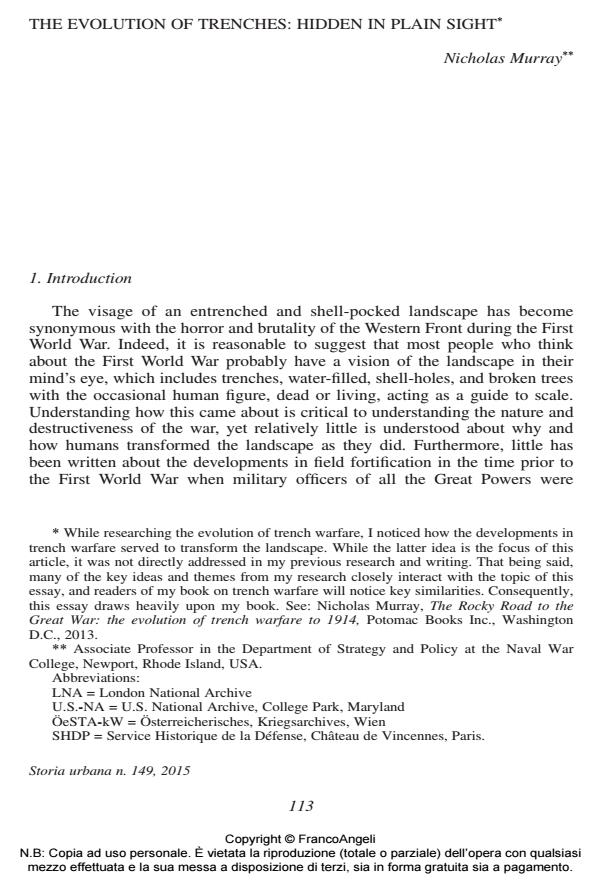The evolution of trenches: hidden in plain sight
Journal title STORIA URBANA
Author/s Nicholas Murray
Publishing Year 2016 Issue 2015/149
Language English Pages 26 P. 113-138 File size 1483 KB
DOI 10.3280/SU2015-149005
DOI is like a bar code for intellectual property: to have more infomation
click here
Below, you can see the article first page
If you want to buy this article in PDF format, you can do it, following the instructions to buy download credits

FrancoAngeli is member of Publishers International Linking Association, Inc (PILA), a not-for-profit association which run the CrossRef service enabling links to and from online scholarly content.
The story of how the evolution of trenches transformed the landscape and why soldiers utilized them has, by in large, been neglected. Yet, it is a story that is critical to understand why the battlefields of Western Europe in World War One looked the way they did: barren moonscapes covered in scars with millions of men hiding in plain sight. This essay examines the evolution of modern field fortifications from the aboveground breastworks of the mid-nineteenth century to the belowground trenches of the First World War. During that time, the technology of killing (particularly that of machine guns and artillery) became much more powerful and this development forced armies to change the way they physically protected their soldiers. The use of trenches and concealment were a direct response to the increase in battlefield lethality. The move below ground, both to protect and conceal the soldiers, required an enormous increase in both the quantity and weight of offensive firepower in order to deal with it. That is, armies needed vast numbers of artillery shells, particularly heavy ones, to force men from their positions or to kill them. In turn, this physically tore up the landscape and created the visage that is all too familiar to us today. Furthermore, and unlike most previous wars, the landscape was often permanently changed.
Keywords: Trench Breastworks Redoubt Landscape
Nicholas Murray, The evolution of trenches: hidden in plain sight in "STORIA URBANA " 149/2015, pp 113-138, DOI: 10.3280/SU2015-149005